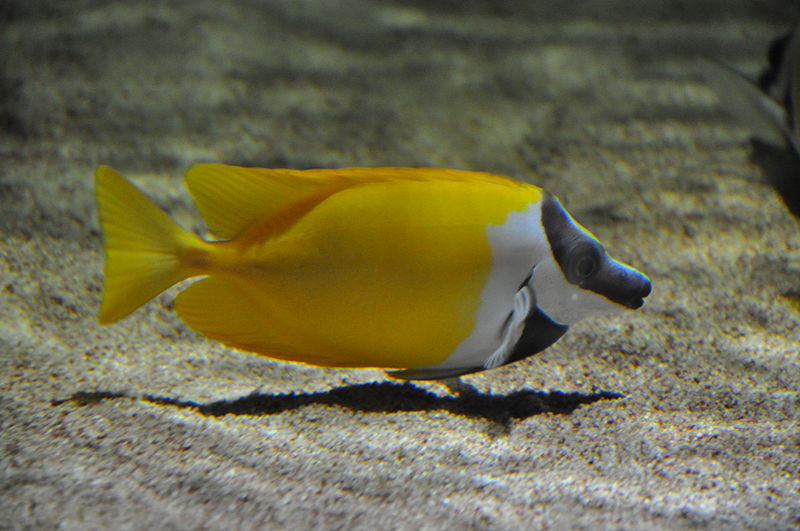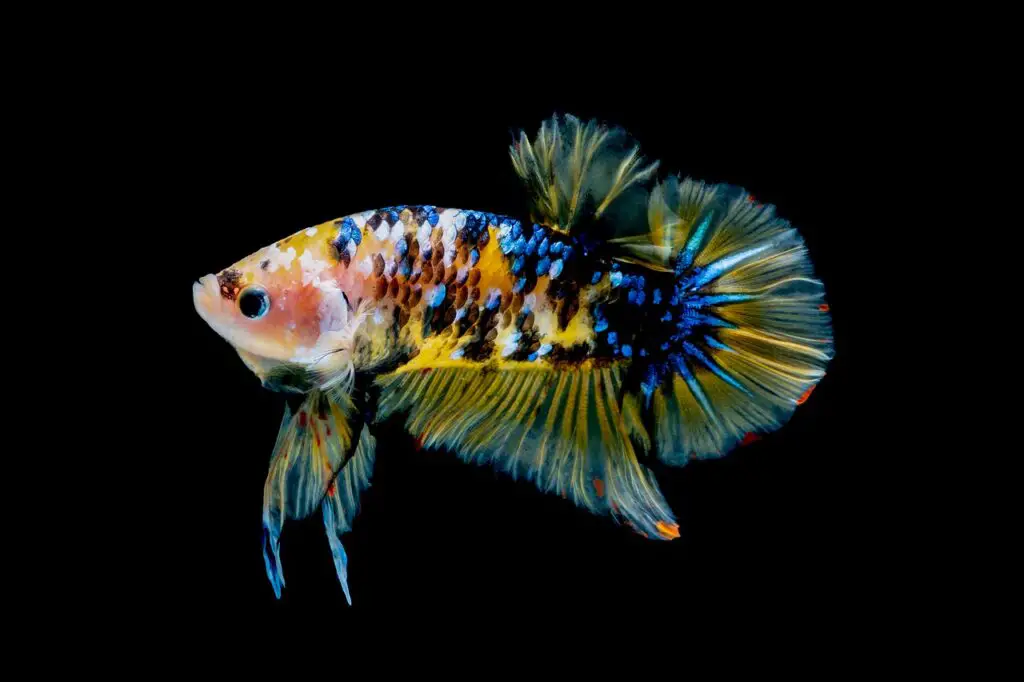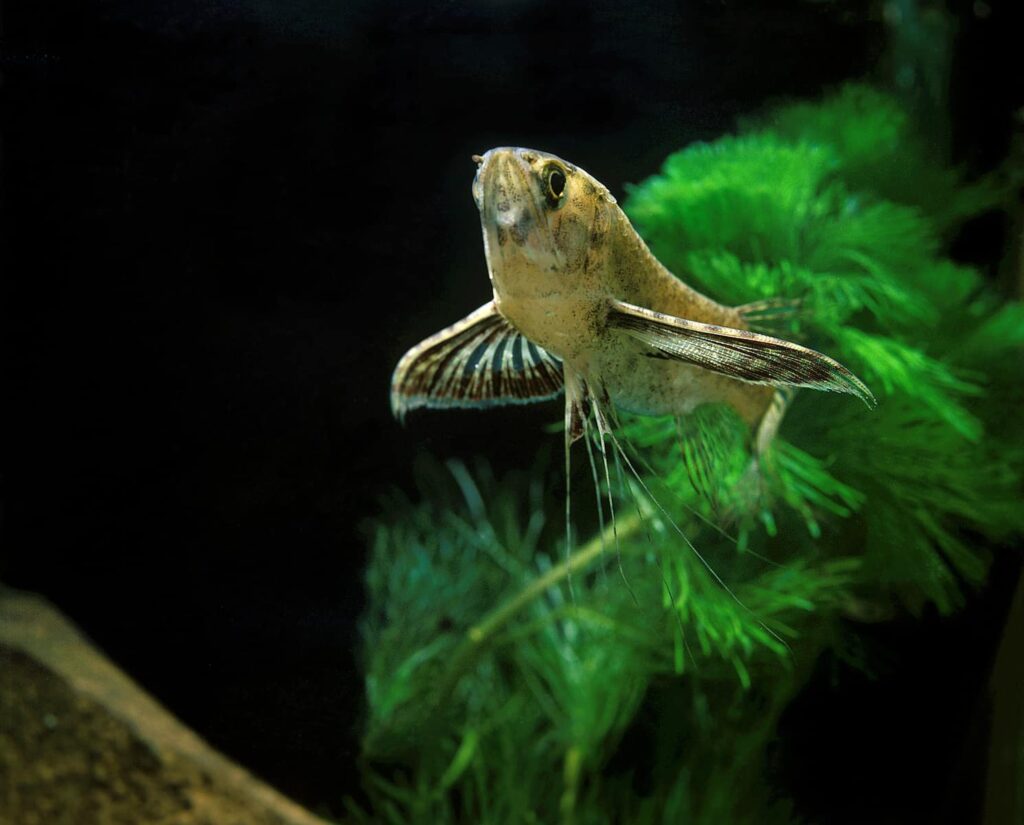Fishkeeping isn’t easy. It takes a lot of research and effort to keep a tank in good conditions. Making sure you have the right habitat, tank mates, water parameters, and food is crucial for keeping your fish healthy.
Foxface rabbitfish, with their beautiful yellow and black coloring, are a great way to spice up the variety in your tank and add a splash of color, but if you notice your fish isn’t looking happy or is changing colors, it can make you wonder what’s wrong with them.
If your foxface rabbitfish is stressed, you will notice a loss of color and glass surfing. Some potential causes of stress include aggressive tank mates, lack of cover, or poor water conditions in the tank.
There’s a lot that goes into foxface rabbitfish care to make sure they are happy and healthy. The rest of this article will explore everything you know to keep your foxface rabbitfish content.
Habitat Mates
The foxface rabbitfish is a passive herbivore, making it an ideal choice to pair with small invertebrates like shrimp. They also hold their own well with other, more aggressive fish, due to their venomous spines that serve to protect them from harassment.
Of course, a tank filled with big, aggressive fish only is a recipe for stressed-out fish. Some suitable tank mates include the following:
- Anthias
- Basslets
- Batfish
- Clownfish
- Gobies
- Damsels
- Hogfish
- Tangs
A strong personality, foxface rabbitfish tend to spend most of their time front and center rather than hiding and are quite territorial when it comes to others of their species.
As such, you should avoid putting multiple foxface rabbitfish in one tank; instead, opt for fish with similar proportions and colors.
Tangs, for example, can add a nice splash of color to compliment the look of your foxface rabbitfish.
Typical Appearance and Behavior
Growing up to 21 inches in length, depending on the species, the foxface rabbitfish can live for up to five years. Foxface rabbitfish generally have a yellow body with black and white markings on the top of their face and side.
Their facial features are streamlined, while their body is a more rounded shape. With 13 dorsal fins that can be raised to form sharp spikes, handling this fish can be painful― not that they will attack, of course, but you wouldn’t want one to brush against your hand.
Typically, they spend their time in the middle or lower part of a tank, hovering near objects or cover. They tend to claim spots for their own, but most of their time is spent swimming back and forth near the front of the tank.
Why Is My Foxface Changing Colors?
If your foxface rabbitfish is developing darker colors, it is likely due to stress. You may notice that their pectoral fin is tightly clamped, or that they choose to spend most of their time hiding.
If so, oftentimes this behavior indicates that conditions in the tank are stressful, and you may need to consider adding more natural cover, reducing the number of fish, or upgrading to a larger tank to accommodate the number of tankmates.
If your foxface rabbitfish is adopting more of a white color, it may simply be that your fish is adapting to the rocky environment to better hide from sight. Some fish sometimes take on a lighter hue when sleeping.
How Do You Acclimate FoxFace Rabbitfish into a Tank?
Before acclimating your fish, make sure that your quarantine tank is properly cycled and set up for visitors. A quarantine tank helps reduce the risk of disease spreading from a new fish to the rest of your tank.
The best way to acclimate a foxface rabbitfish is to use drip acclimation, which serves to reduce the shock of being introduced to a new environment and water parameters.
First, float your fish in the top of the tank for at least 20 minutes to allow them to acclimate to the temperature of the tank, then carefully put the fish (water included, of course) into a bucket. Make sure you don’t forget about those venomous spikes!
Start a siphon from your target tank into the bucket, aiming for a slow and steady drip (about 2-4 per second). Be sure the receiving end of the siphon is underwater to avoid injury to the fish. Once you’ve doubled the amount of water in the tank, dump half of it down the drain.
Repeat the dripping process until you’ve doubled the amount of water twice more. After you’ve finished, your foxface is ready to be transferred to the quarantine tank. The average recommended quarantine period before adding a new fish to your show tank is two weeks.
Are Foxface Rabbitfish Reef Safe?
A fish being reef-safe simply means that they won’t attack smaller fish or invertebrates in a reef setting, and generally don’t tend to harass other fish of similar size.
While every individual fish has its own personality, foxface rabbitfish are generally quite placid and won’t bother smaller fish. Even better, these fish have venomous spikes that ward off aggressive behavior from other bigger tank mates.
What Do Foxface Rabbitfish Eat?
Foxface rabbitfish are primarily herbivorous and mostly feed on algae, although they will eat live food, marine flakes, and freeze-dried mysis or brine shrimp.
Algae sheets should be attached to the side of the aquarium for constant access, and additional feeding should be done no more than once or twice daily.
Conclusion
The foxface rabbitfish is a wonderful personality for any saltwater tank, and their passive nature makes them ideal for reef tanks. If your foxface is stressed, it may be due to aggressive or unsuitable tank mates, habitat conditions, or poor water quality.
If your foxface starts turning darker and tends to hide most of the day, odds are that your fish is stressed and may need a change of scenery to feel safer. Hopefully, with all of this information, you’ll be well-equipped to take good care of your foxface rabbitfish!



